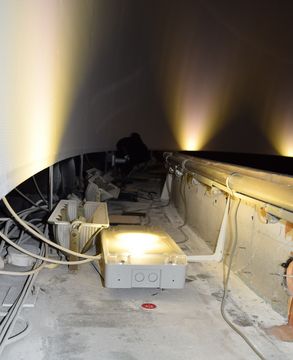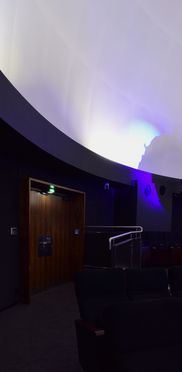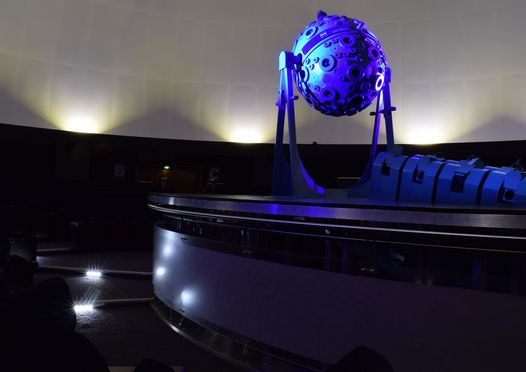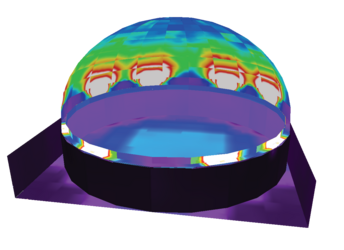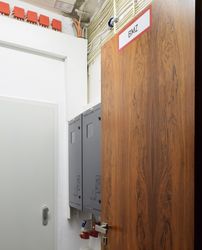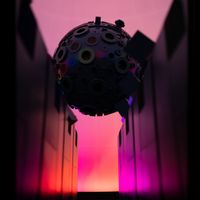Zeiss Planetarium Bochum
“I love the stars too much, to be afraid of the night.”

This is how the famous Galileo Galilei is once said to have expressed it. On August 21, 1609, he demonstrated a telescope in Venice with which he made ground breaking observations of the skies: He discovered the mountains on the moon's surface, sunspots, Saturn's rings, and four moons of Jupiter, called Galilean moons after him. In the following years, the first observatories in today's sense were established – astronomical observatories with scientific instruments for observing the night sky.
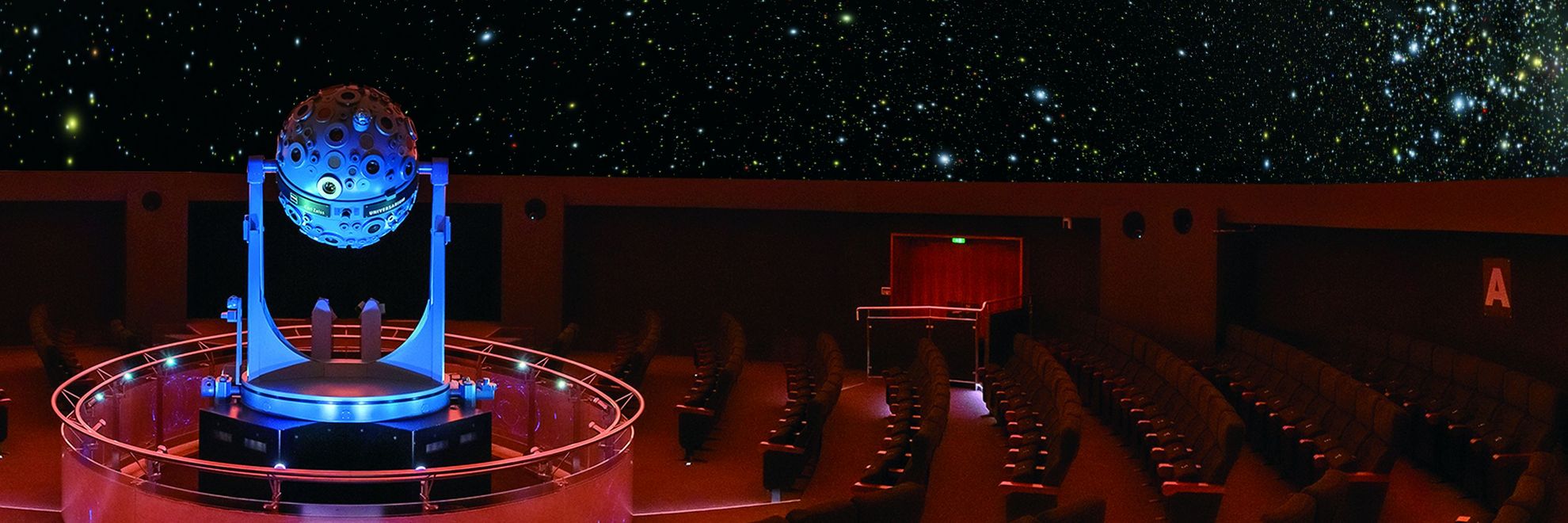
In contrast to an observatory, which observes the real sky, a planetarium creates a simulated starry sky and makes it able to be experienced by a wide public. One such planetarium is located in Bochum.One such planetarium is located in Bochum. Every year, around 2,000 events attract more than 200,000 visitors to the domed building, where customized products from INOTEC ensure safety.
Extensive modernization – without black holes
The planetarium's technical facilities are modernized every ten years or so. From July to December 2020 and, it was that time again: The modernization of the tribunes/seating, an upgrade of the full dome projection system by replacing the eight existing projectors with eleven new projectors with a LED light source, and the renewal of the entire media control system, took place. In the course of adapting to current safety regulations, the building's complete central electrical distribution system – with some of the installation being around 60 years old – was also renewed, and a new fire alarm system was installed.
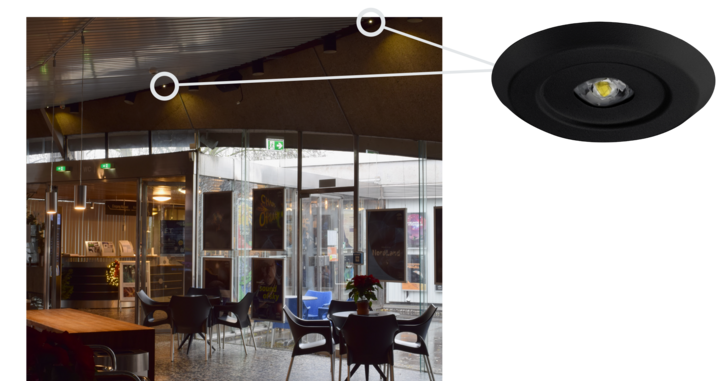
Customized solution – galactically good
In the course of this, safety technology from INOTEC was installed for the safety of the guests and employees, by the local company Elektro Mild GmbH in Bochum – with CLS system and emergency lights in corridors and in the outside area there was no problem, in the auditorium with the projection dome, however, there was no simple solution. Sven Giersch, Systems Engineer at the Zeiss Planetarium Bochum, explains: "In general, everything technical here has to be installed as inconspicuously as possible. On the one hand, the building has been a listed building since 2005, and on the other hand, we work in almost complete darkness when the show is running, so that even the escape sign luminaires have to be as dark as possible to avoid any disturbing stray light, but go to maximum brightness if necessary." Consequently, it was logical that no emergency luminaires could be installed on the curved projection surface of the dome.
A huge reflector – like the moon
Actually, what was needed was a special lighting design. The non-conforming solution: First, three modern CLS FUSION decentralized emergency lighting systems with 24V end circuits replaced the old central emergency lighting unit. The only way to illuminate the entire area of the interior with 1 lux was through indirect lighting, mounted in a circumferential channel. For this purpose, they took advantage of the fact that the hall ceiling is a projection dome anyway, so it reflects well and could thus serve as a 'giant reflector' for the eleven emergency luminaires. In this way, they were able to achieve indirect and glare-free lighting. As a rule, according to EN 1838, only the direct component of the safety lighting is used. However, in the case of indirectly shining luminaires, the first reflection can also be taken into account. In this case, the SN 8500-08 SHB, which is specially designed for increased lighting requirements, offered itself as a suitable emergency luminaire.
»The current lighting is, in contrast to the past, very inconspicuous, as it is concealed behind a cove in the auditorium and installed almost invisibly for the handling.«
Sven Giersch (System Engineer, Zeiss Planetarium Bochum)
Lighting design – 5 stars for execution
Since such requirements are not commonplace, technical lighting proof had to be provided in advance for verification. The DIALux lighting design software was used to recreate the dome and determine the number and placement of the luminaires. To ensure safe exit from the building in the event of a power failure, additional step lights were used. The safety and escape route sign luminaires can be dimmed or switched via CLS FUSION during the demonstration so that spectators are not distracted by the safety lighting.
Decentralized system – light years ahead
Things were simpler in the reception area and stairwells, where surface-mounted luminaires were used. Since the LED drivers for connection to the CLS FUSION are very compact due to the 24V system voltage, they can be integrated in very discreet luminaire housings. In this way, even surface-mounted luminaires can be inconspicuously integrated into the ceiling appearance. In other areas, the emergency luminaires were installed in the ceiling. In contrast to the new system with CLS FUSION, the old, battery-based system with flood lights in the auditorium as well as in the walkways, was supplied from its own battery room, which now serves as a storage room.
Viewing the universe – without any risk
Since then, the Zeiss Planetarium in Bochum has once again invited visitors to discover distant worlds, galaxies millions of light years away and, cosmic relationships – with the naked eye, the view extends far beyond the visible sky into space. Even better than Galileo Galilei, guests at the planetarium can enjoy the starry night sky without fear, because state-of-the-art technology discreetly ensures maximum safety.
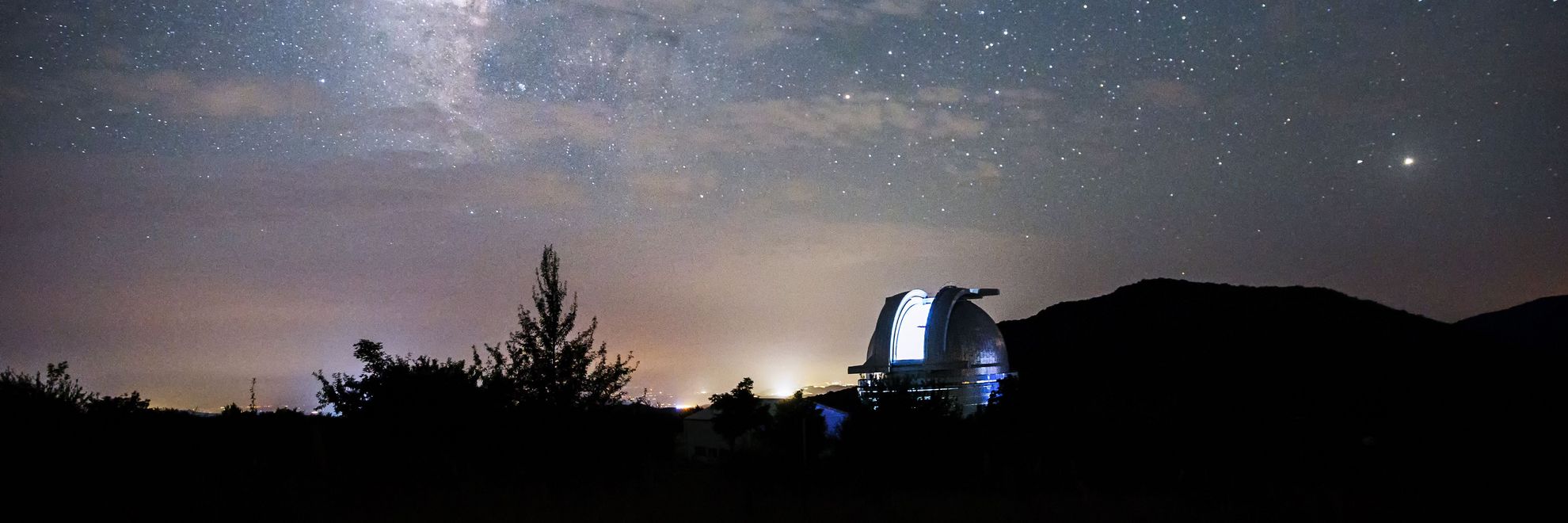
Planetarium and observatory
A planetarium was once referred to a device for displaying the course of the planets. Until the 19th century, it was a small mechanical apparatus, now called an orrery. The contemporary planetarium is a domed building where images of the starry sky are projected by a special projector (planetarium projection) on to the inner surface of the dome. It can show the daily and annual movements at any time and for any place. The inventor of the modern planetarium projection is the physicist Walther Bauersfeld, who built the first of its kind in 1919 at the request of Carl Zeiss Jena. It is not to be confused with an observatory, since it simulates a starry sky, whereas in an observatory one observes the actual, existing celestial bodies.
